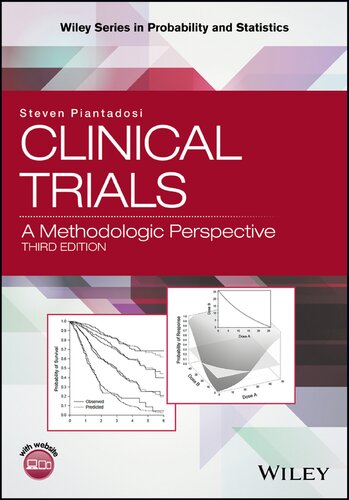

Most ebook files are in PDF format, so you can easily read them using various software such as Foxit Reader or directly on the Google Chrome browser.
Some ebook files are released by publishers in other formats such as .awz, .mobi, .epub, .fb2, etc. You may need to install specific software to read these formats on mobile/PC, such as Calibre.
Please read the tutorial at this link: https://ebookbell.com/faq
We offer FREE conversion to the popular formats you request; however, this may take some time. Therefore, right after payment, please email us, and we will try to provide the service as quickly as possible.
For some exceptional file formats or broken links (if any), please refrain from opening any disputes. Instead, email us first, and we will try to assist within a maximum of 6 hours.
EbookBell Team

5.0
80 reviews
Presents elements of clinical trial methods that are essential in planning, designing, conducting, analyzing, and interpreting clinical trials with the goal of improving the evidence derived from these important studies
This Third Edition builds on the text’s reputation as a straightforward, detailed, and authoritative presentation of quantitative methods for clinical trials. Readers will encounter the principles of design for various types of clinical trials, and are then skillfully guided through the complete process of planning the experiment, assembling a study cohort, assessing data, and reporting results. Throughout the process, the author alerts readers to problems that may arise during the course of the trial and provides common sense solutions. All stages of therapeutic development are discussed in detail, and the methods are not restricted to a single clinical application area.
The authors bases current revisions and updates on his own experience, classroom instruction, and feedback from teachers and medical and statistical professionals involved in clinical trials. The Third Edition greatly expands its coverage, ranging from statistical principles to new and provocative topics, including alternative medicine and ethics, middle development, comparative studies, and adaptive designs. At the same time, it offers more pragmatic advice for issues such as selecting outcomes, sample size, analysis, reporting, and handling allegations of misconduct. Readers familiar with the First and Second Editions will discover revamped exercise sets; an updated and extensive reference section; new material on endpoints and the developmental pipeline, among others; and revisions of numerous sections.
In addition, this book:
• Features accessible and broad coverage of statistical design methods—the crucial building blocks of clinical trials and medical research -- now complete with new chapters on overall development, middle development, comparative studies, and ad